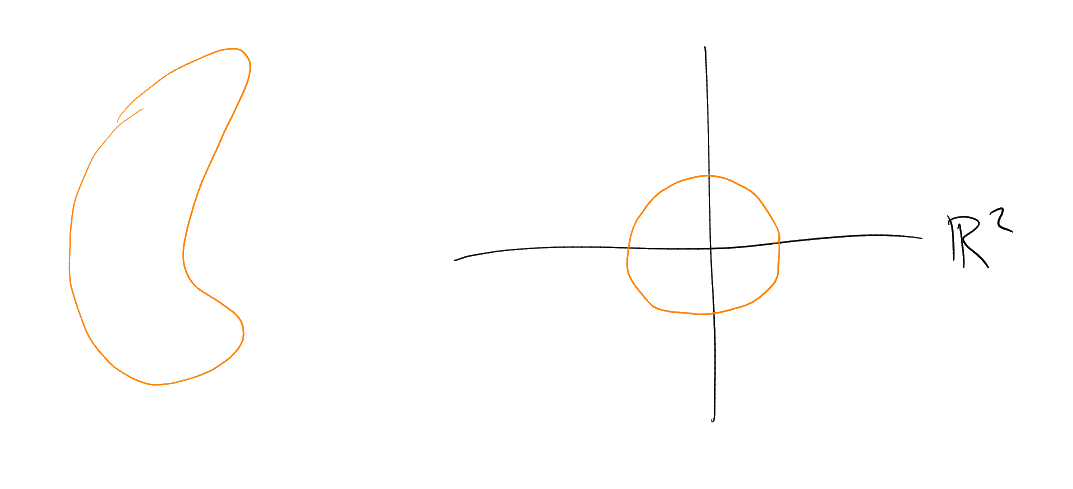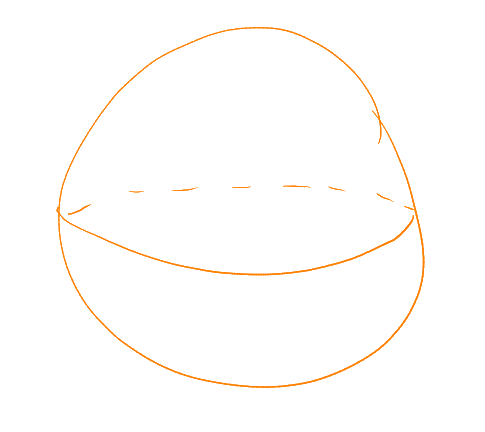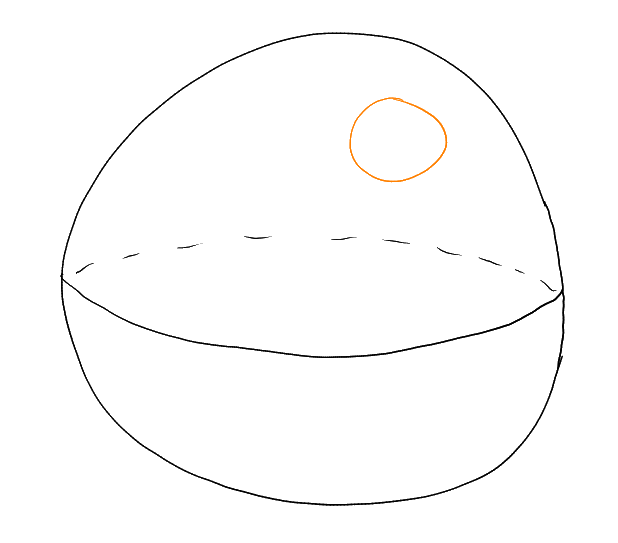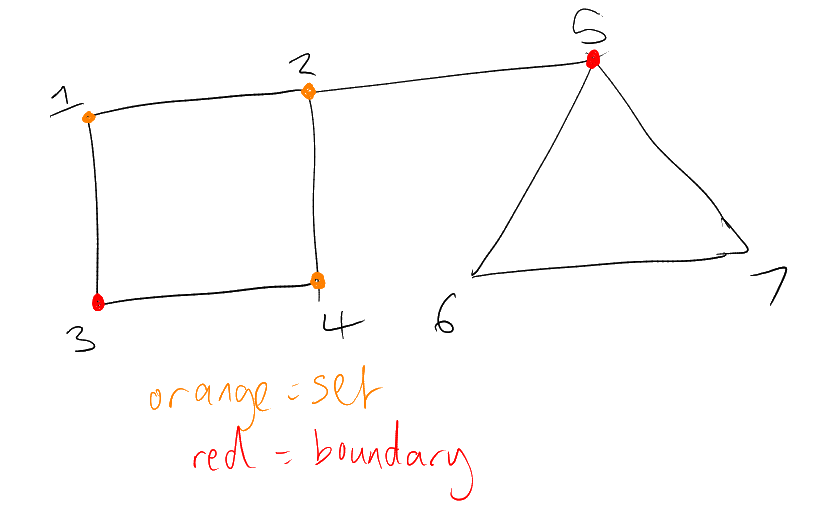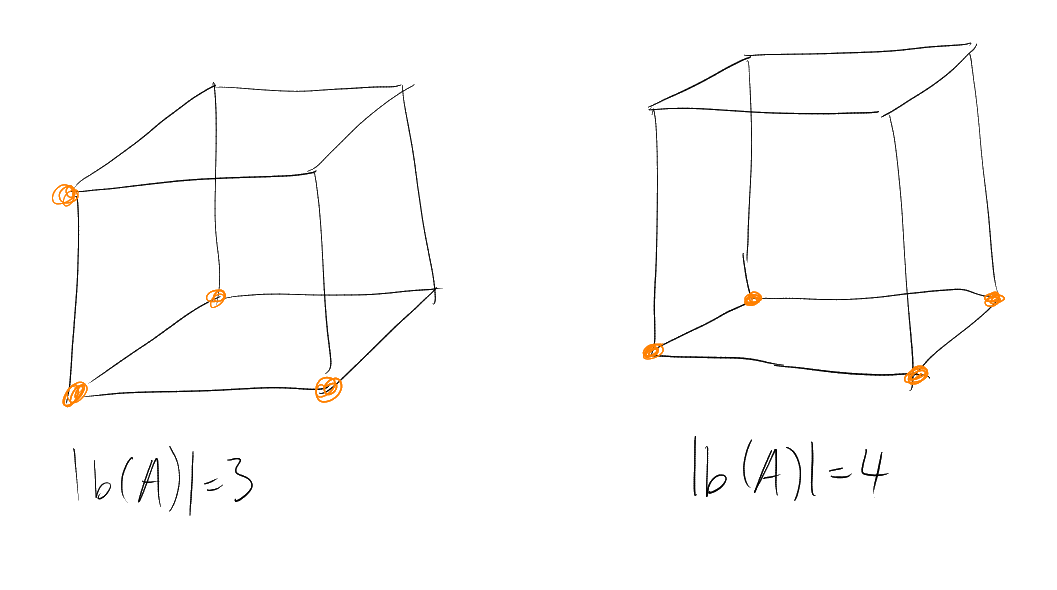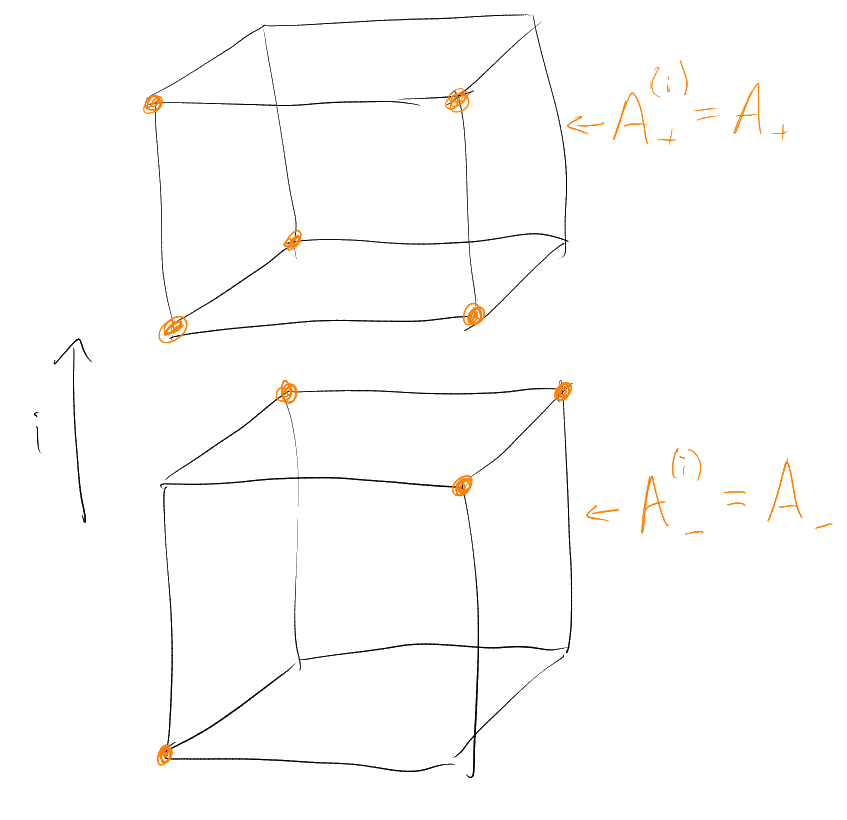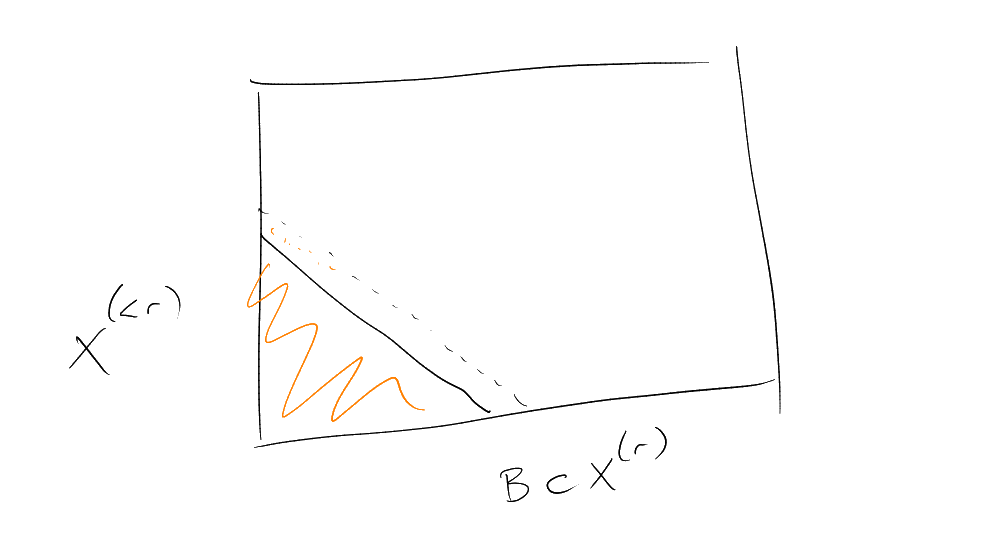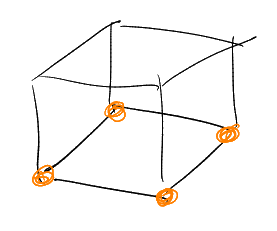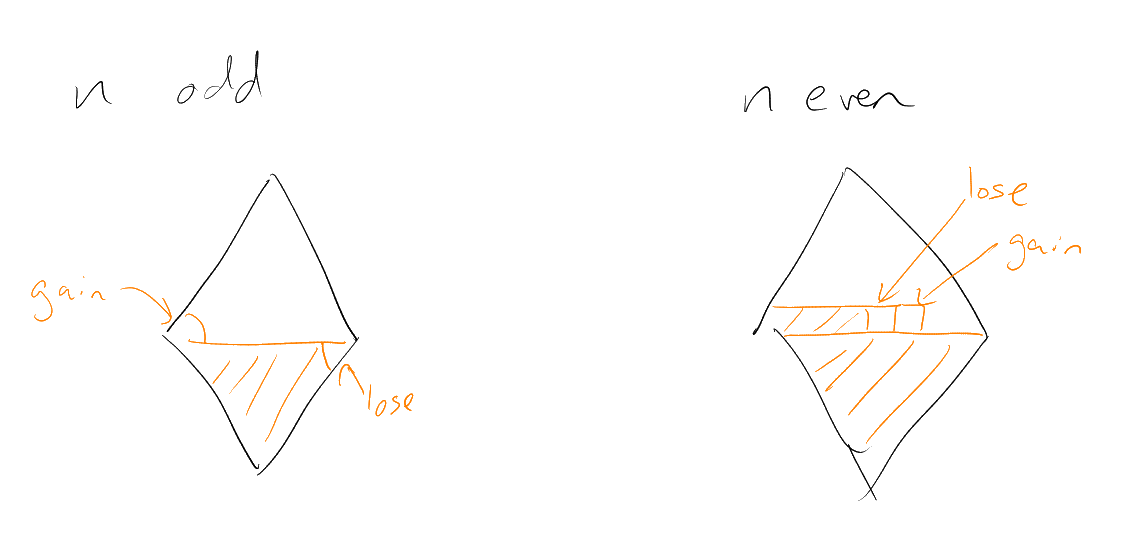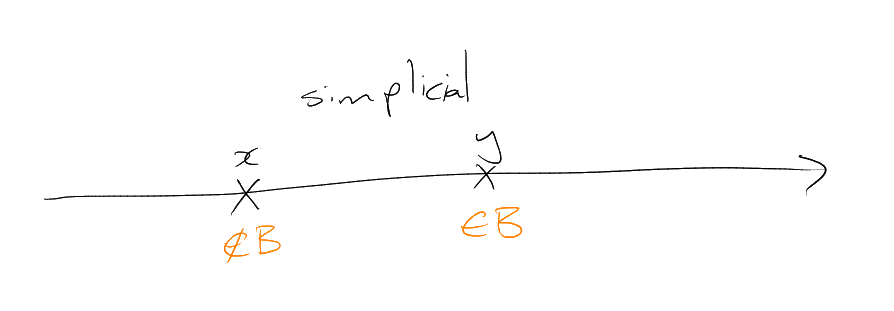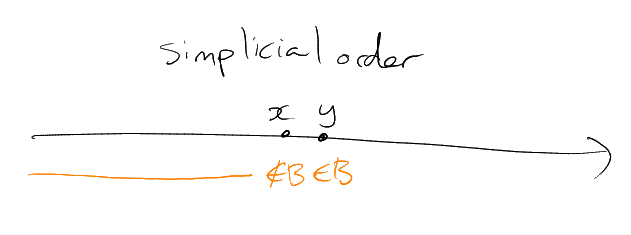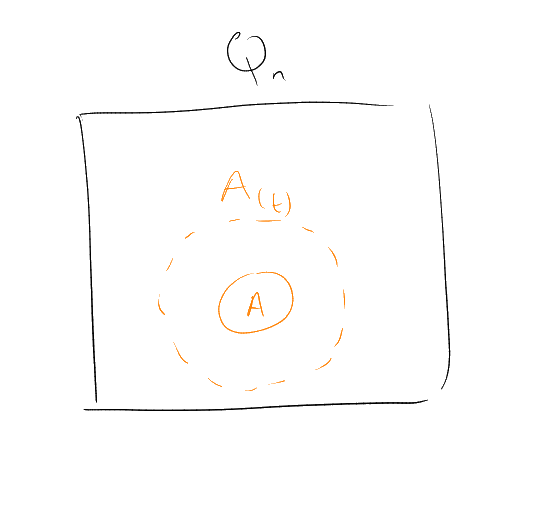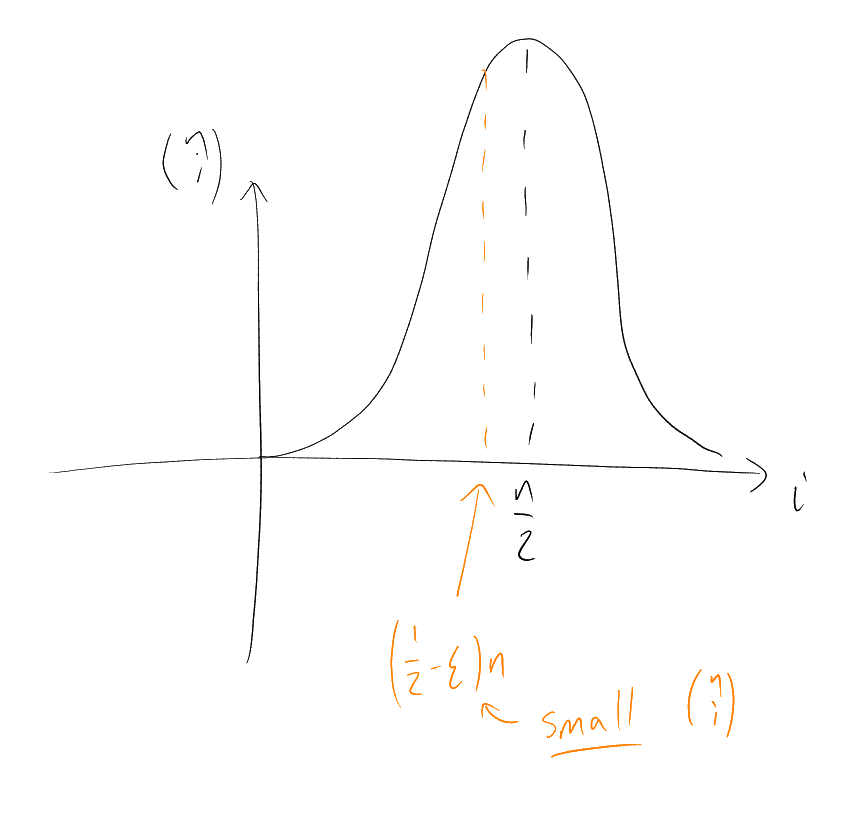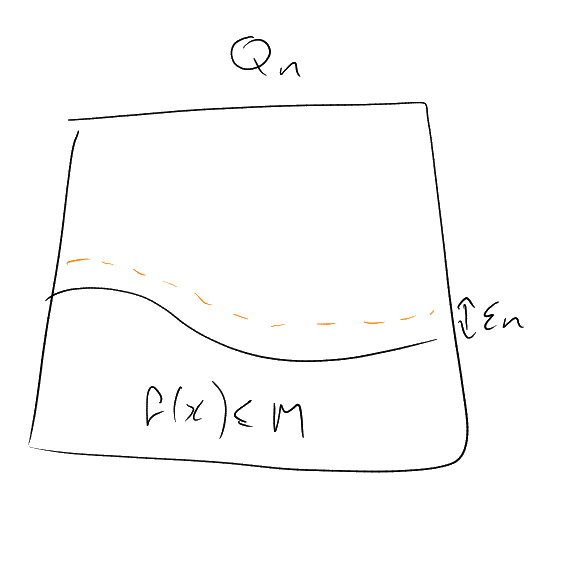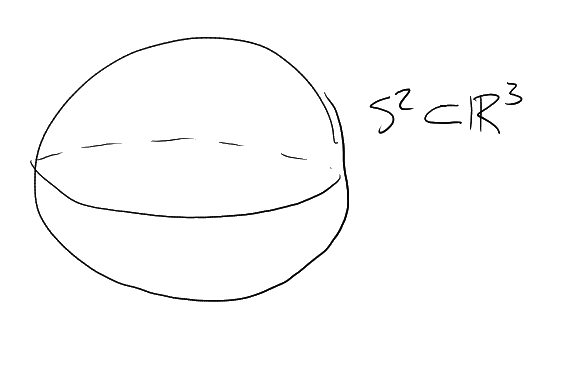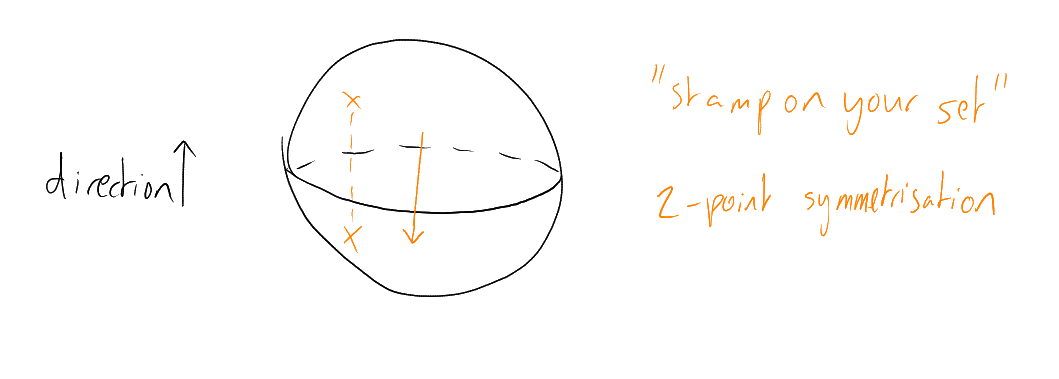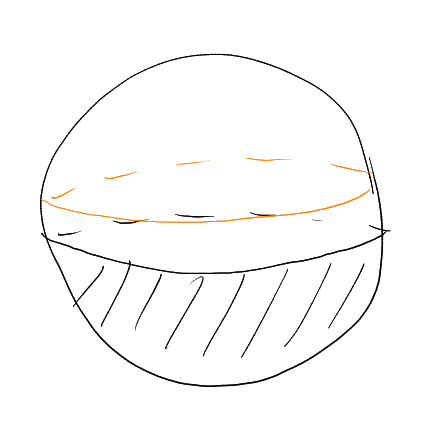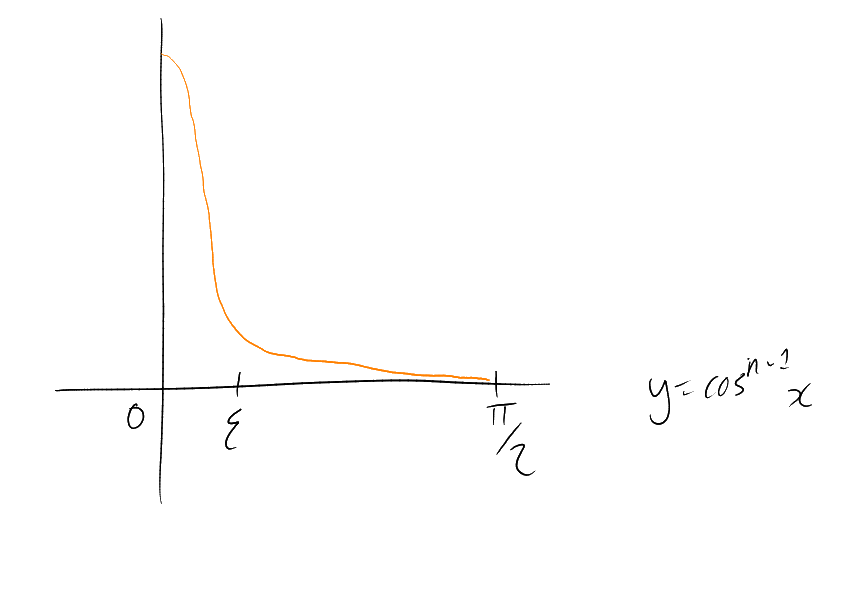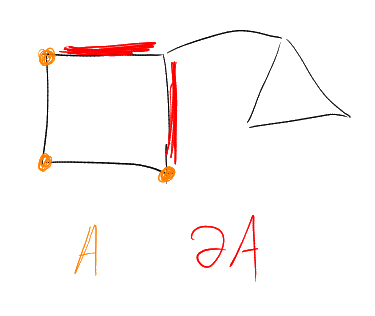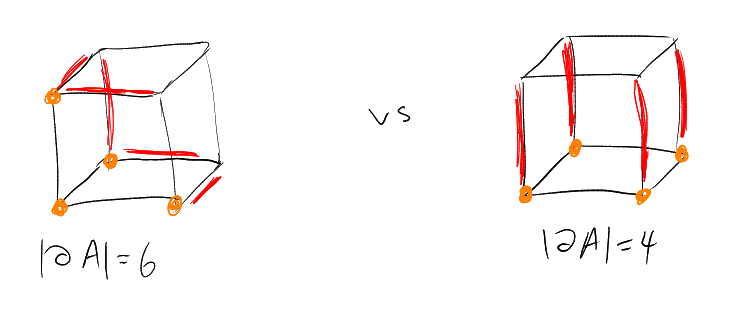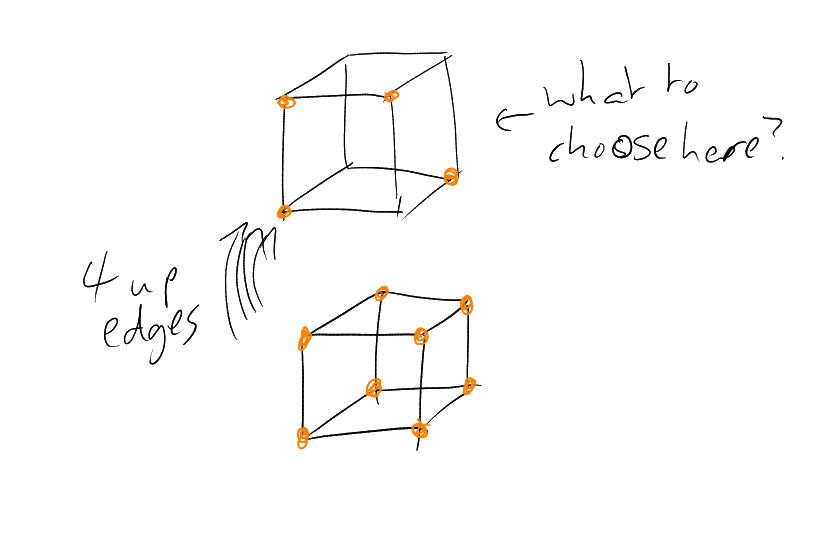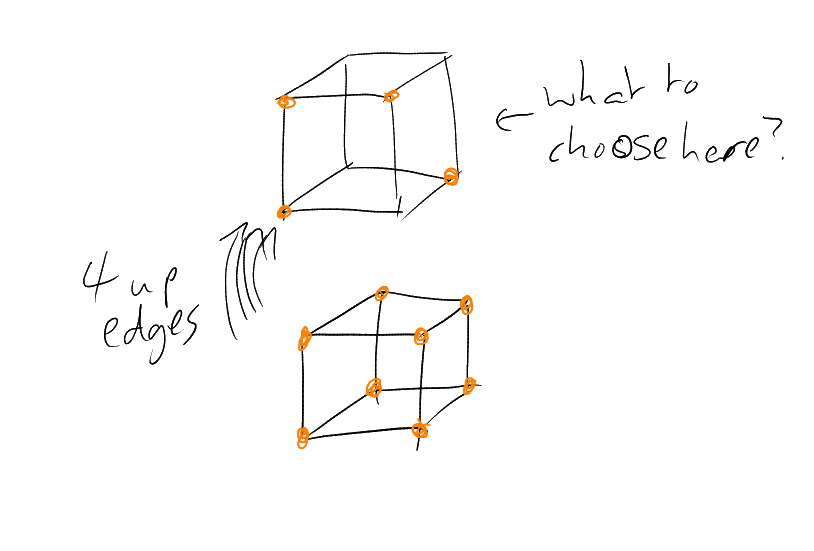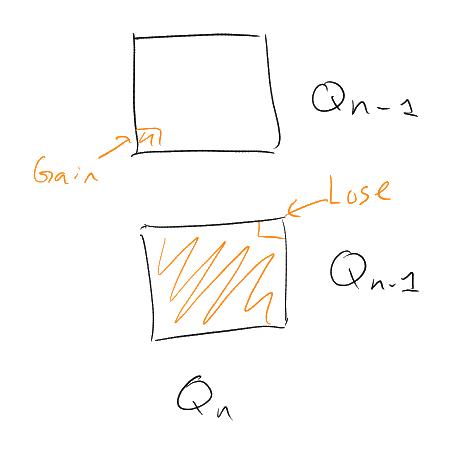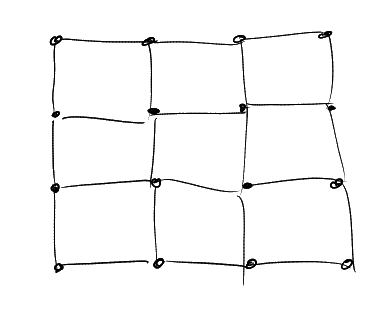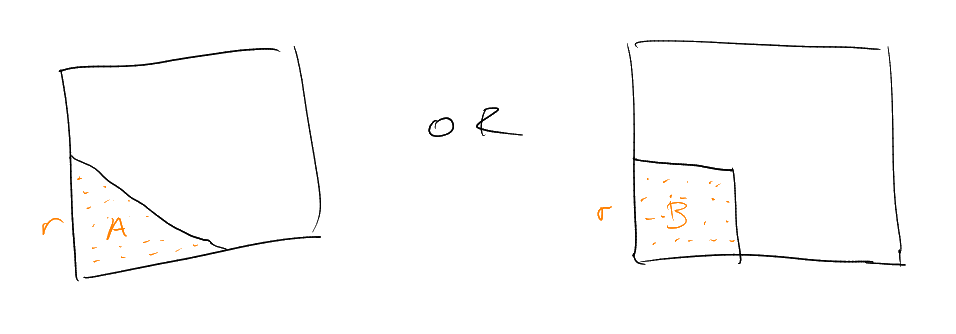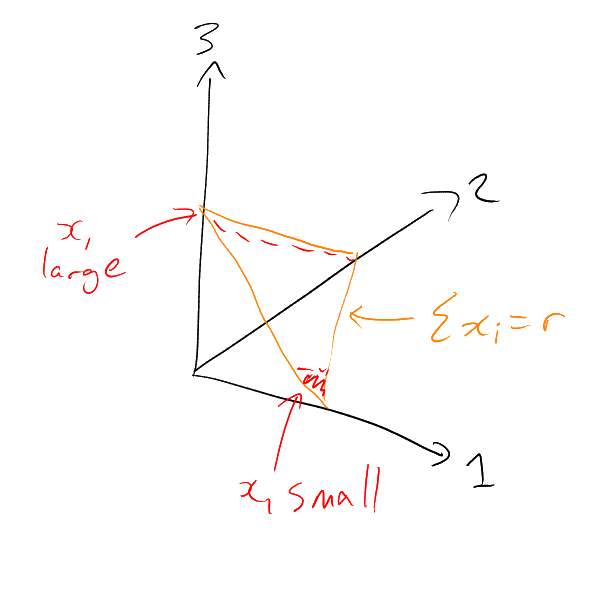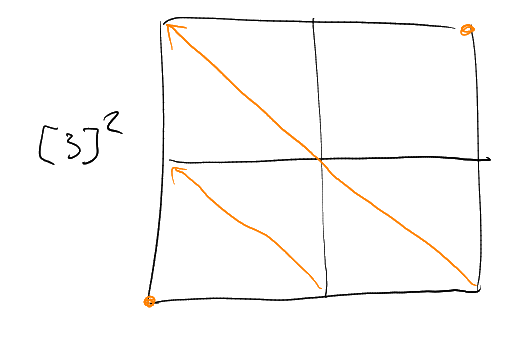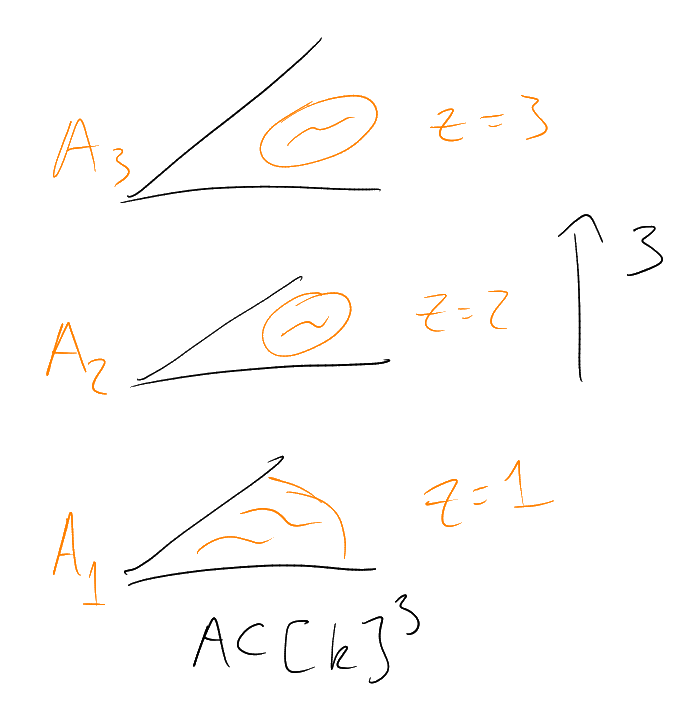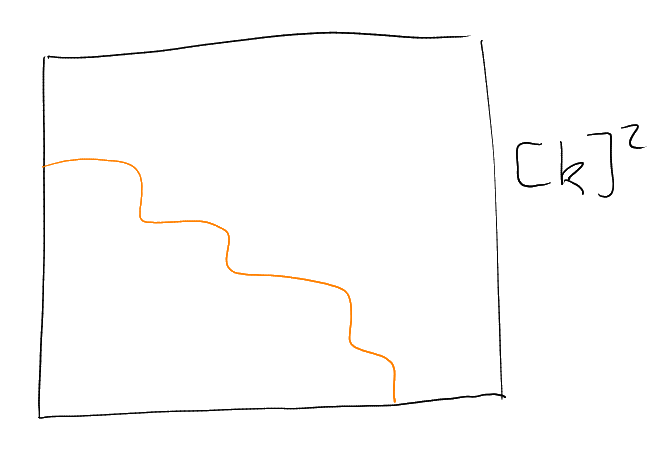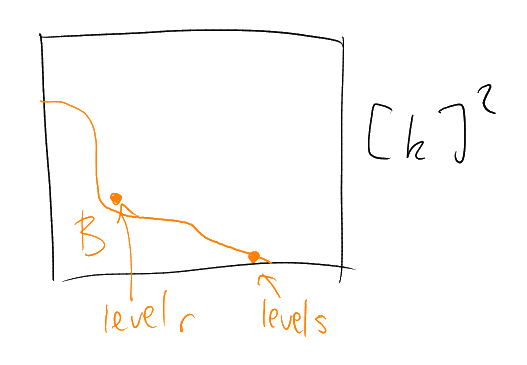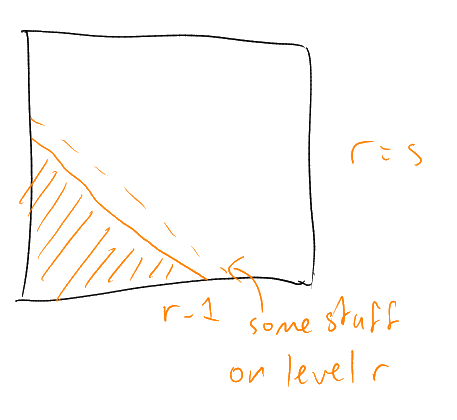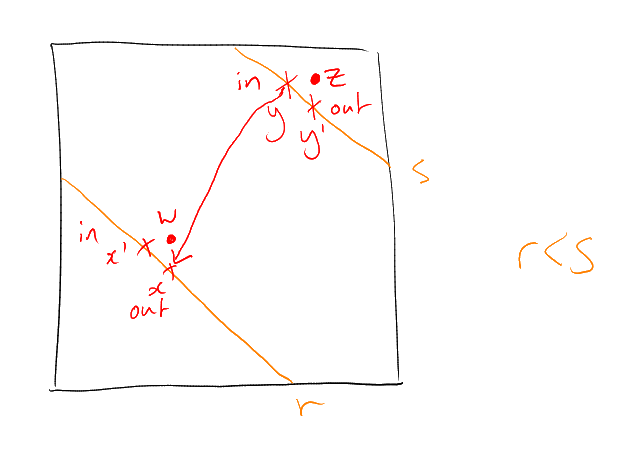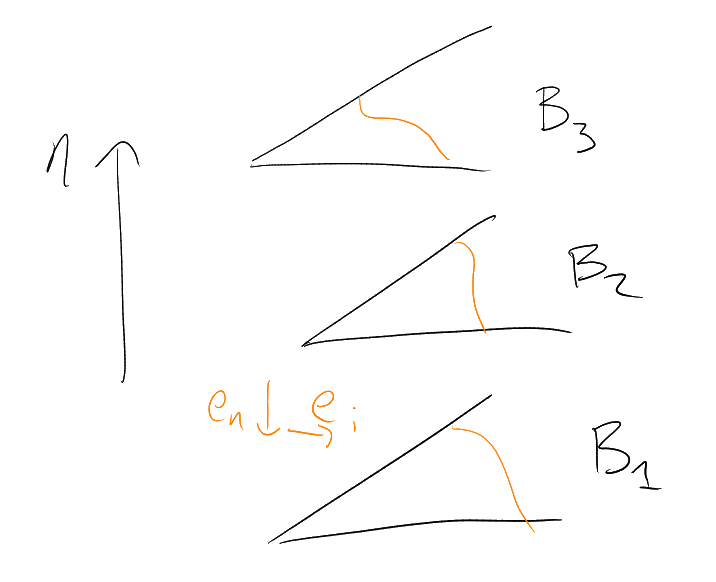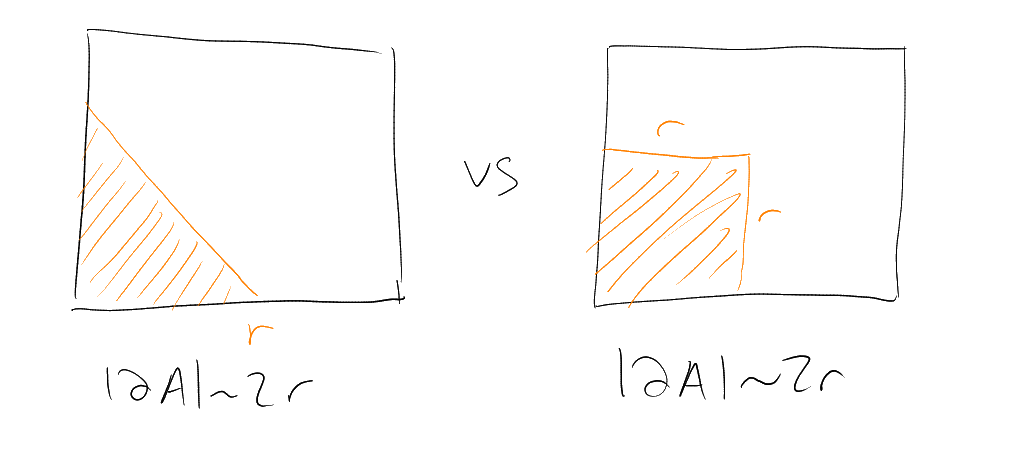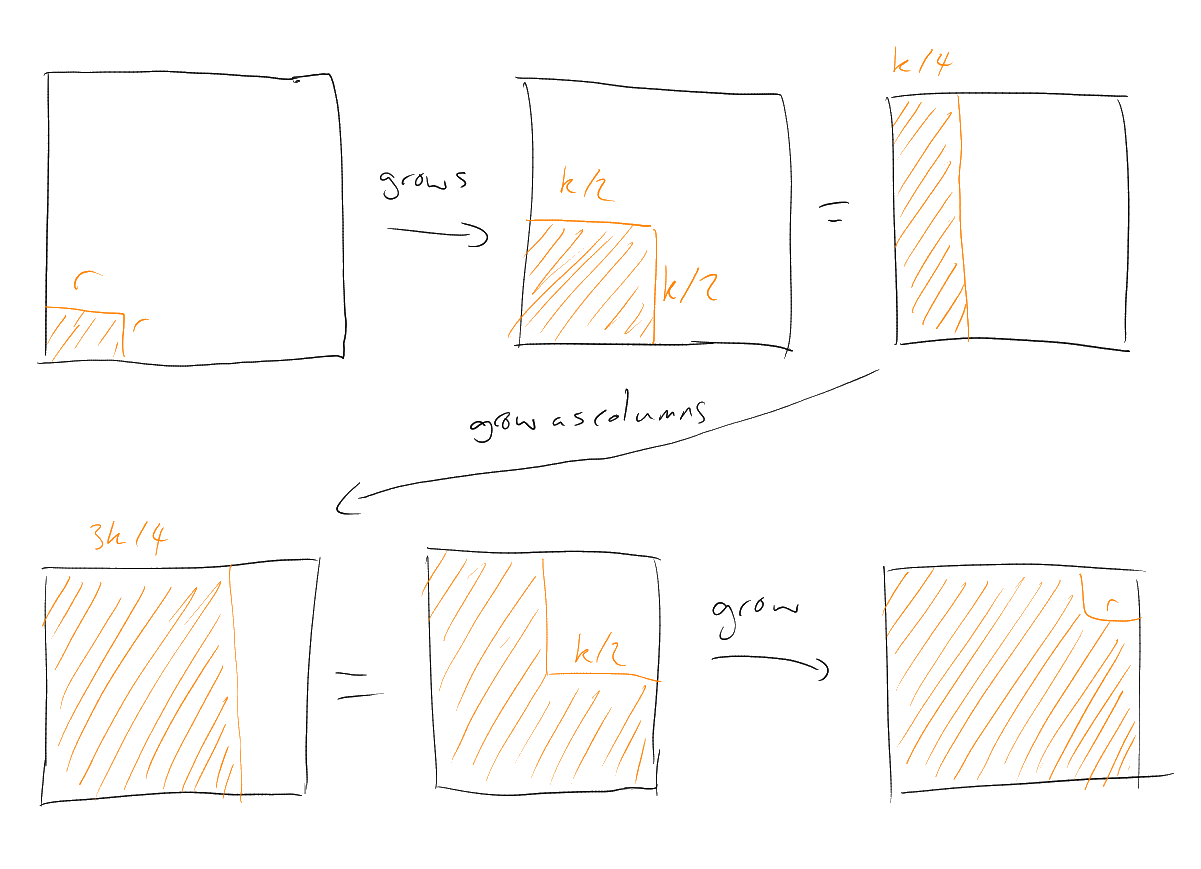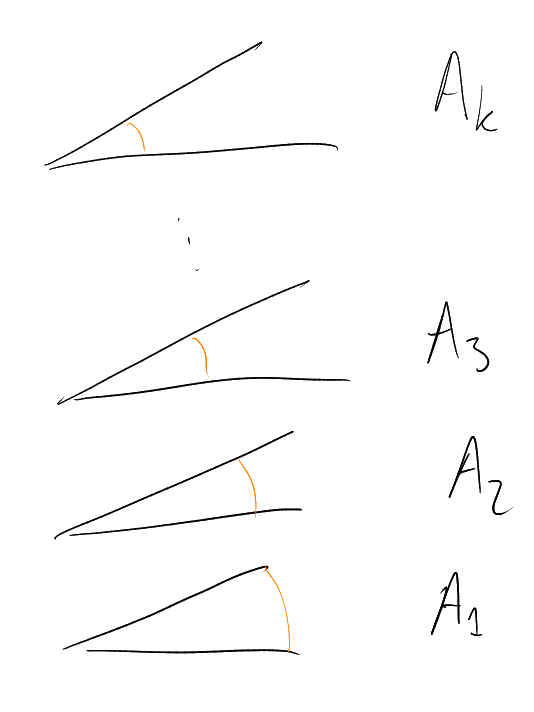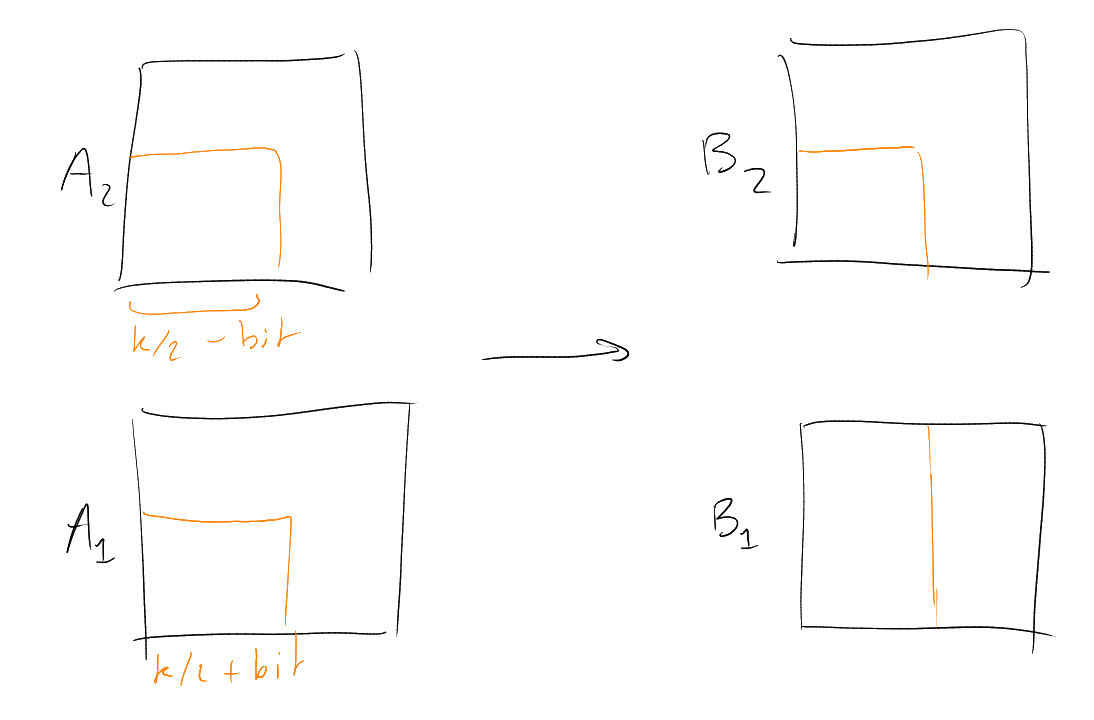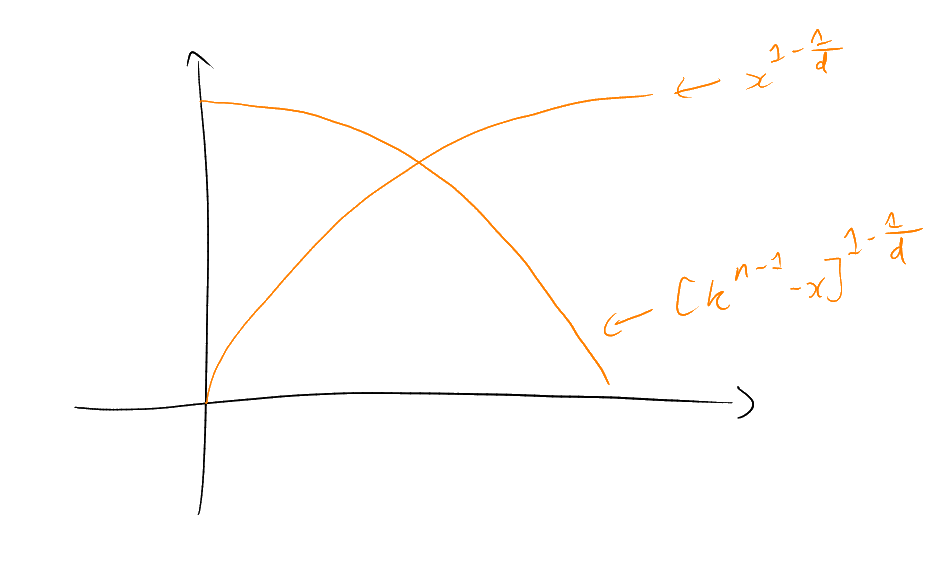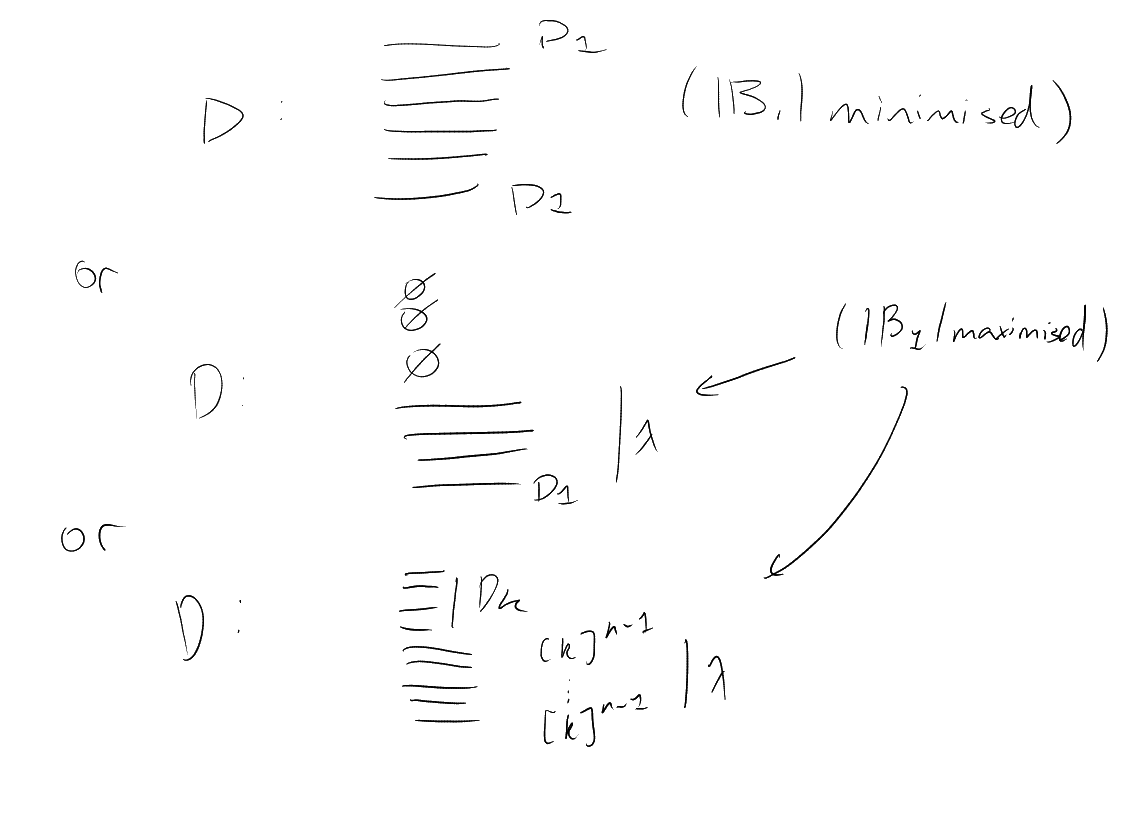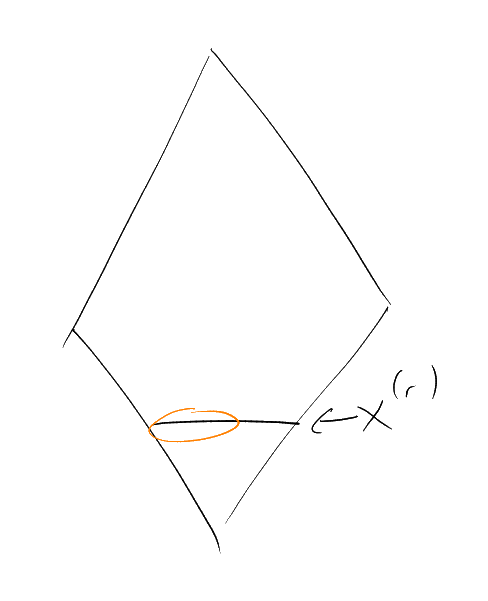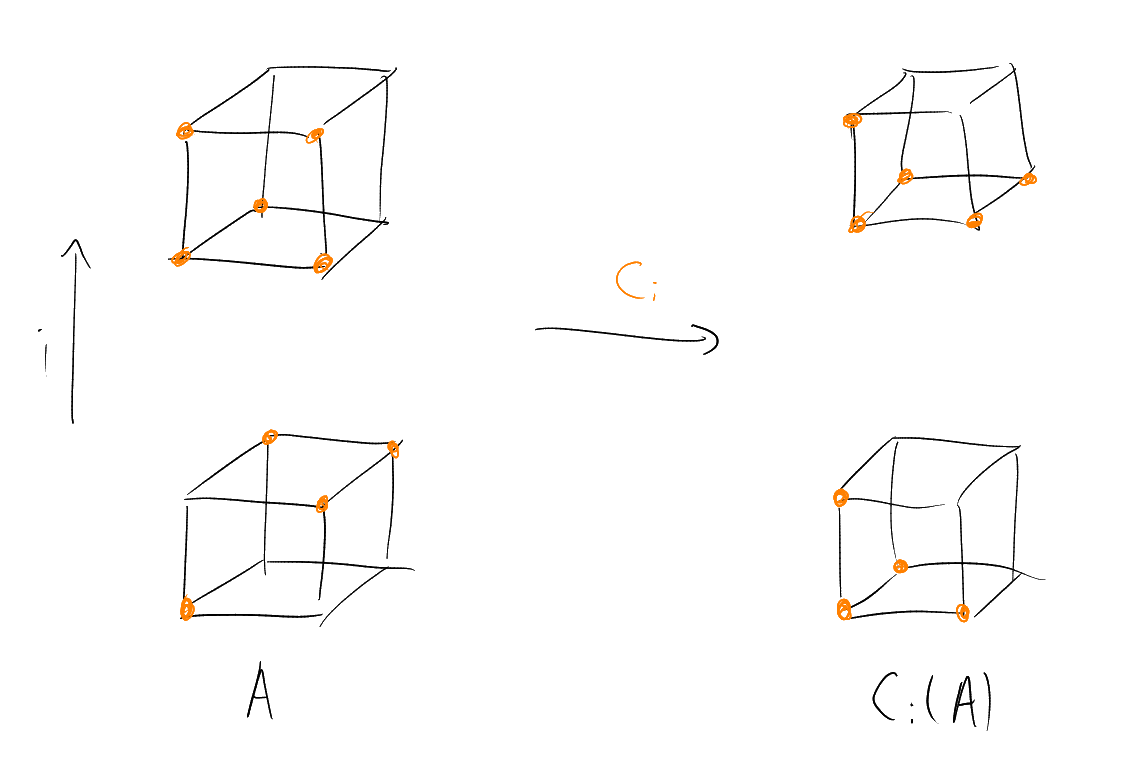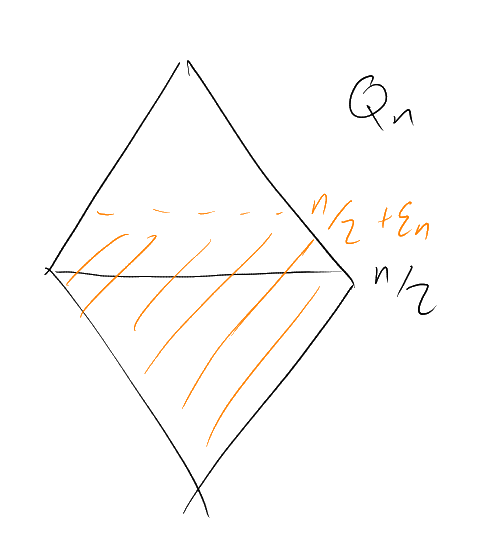2 Isoperimetric Inequalities
“How do we minimise the boundary of a set of given size?”
Example.
Among all subsets of
of given area, the disc minimises the perimeter.
Among all subsets of of
given volume, the solid sphere minimises the surface area.
Among all subsets of
of given surface area, the circular arc has the smallest perimeter.
Definition (Boundary in a graph).
For a set
of vertices of a graph ,
the boundary of
is
|
|
Example.
Here, if ,
then .
Definition (Isoperimetric inequality).
An isoperimetric inequality on
is an
inequality of the form
for some function .
Definition (Neighbourhood).
Often simpler to look at the neighbourhood of
:
. So
A good example for
might be a ball .
What happens for ?
Good guess that balls are best, i.e. sets of the form
.
What if ?
Guess: take
with . If
, where
, then
. So we’d
take to
be an initial segment of lexicographic (by Kruskal-Katona).
This suggests...
In the simplicial ordering on ,
we set
if either
or and
in
lexicographic.
Aim: initial segments of simplicial ordering minimise the boundary.
Definition (-sections).
For and
, the
-sections of
are the
families
given by:
The -compression
of in the
family
given by:
Example.
Certainly .
Say is
-compressed
if . Also,
“looks more like” a
Hamming ball than
does.
Here, a Hamming ball is a family
with , for
some .
Theorem 1 (Harper’s Theorem).
Assuming that:
Then . In
particular, if
then
.
Proof.
Induction on :
is
trivial.
Given ,
and ,
and .
Claim: .
Proof of claim: Write
for . We
have
and of course
Now, and
(by the induction hypothesis).
But is an initial segment of
simplicial ordering, and
is an initial segment of simplicial ordering (as neighbourhood of initial segment is an initial segment).
So then and
are nested (one conatined
in the other). Hence .
Similarly, .
Hence ,
which completes the proof of our claim. □
Define a sequence
as follows:
Must terminate, because
is strictly decresing.
The final family
satisfies ,
, and is
-compressed
for all .
Does
-compressed for
all imply that
is an initial segment of
simplicial ordering? (If yes, then
and we are done).
Sadly, no. For example in
can take :
However:
Lemma 2.
Assuming that:
Then one of the following is true:
-
either
is odd, say ,
and
-
or
is even, say ,
and .
For the even case: “Remove the last -set
with , and add
the first -set
without .”
After we prove this, we will have solved our problem, as in each case we certainly have
.
Proof.
Since
is not an initial segment of simplicial ordering, there exists
(in simplicial
ordering) with ,
.
For each :
cannot have ,
(as
is
-compressed). Also
cannot have ,
for the
same reason.
So .
Thus: for each , there
exists at most one earlier
with (namely
). Similarly,
for each there is
at most one later
with
(namely ).
So , with
the
predessor of
and .
Hence if
then is the
last -set,
and if then
is the
last -set
with .
□
Proof of Theorem 1.
Done by above. □
For and
, the
-neighbourhood
of is
.
Corollary 3.
Assuming that:
To get a feeling for the strength of Corollary 3, we’ll need some estimates on things like
.
“Going standard deviations
away from the mean .”
Proposition 4.
Assuming that:
Then |
|
“For fixed,
, this is an exponentially
small fraction of .”
Proof.
For :
so
|
|
Hence
|
|
(sum of a geometric progression).
Same argument tells us that
Thus
|
|
Theorem 5.
Assuming that:
Then .
“-sized sets have exponentially
large -neighbourhoods.”
Proof.
Enough to show that if
an integer then
Have , so by Harper’s
Theorem, we have ,
so
|
|
Remark.
Same would show, for “small” sets:
|
|
2.1 Concentration of measure
Say is
Lipschitz if
for all
adjacent.
For , say
is a Lévy mean
or median of
if
and
Now ready to show “every well-behaved function on the cube
is
roughly constant nearly everywhere”.
Theorem 6.
Assuming that:
Then |
|
for any .
Note.
This is the “concentration of measure” phenomenon.
Proof.
Let .
Then ,
so
ut is
Lipschitz, so
implies .
Thus
|
|
Similarly,
|
|
Hence
|
|
Let be a graph
of diameter
().
Definition ().
Write
|
|
So
small says “-sized
sets have large -neighbourhoods”.
Definition (Levy family).
Say a sequence of graphs is a Lévy family if
as ,
for each .
So Theorem 5 tells us that the sequence
is a Lévy family – even a normal Lévy family, meaning
grows exponentially
small in , for
each .
So have concentration of measure for any Lévy family.
Many naturally-occurring families of graphs are Lévy families.
Example.
, where
is made into a
graph by joining
to if
is a
transposition.
Can define similarly for
any metric measure space
(of finite measure and finite diameter).
We deduced concentration of measure from an isoperimetric inequality.
Conversely:
Proposition 7.
Assuming that:
-
,
and
are such that for any
Lipschitz function
with
median
we have
Then for all
with
, we
have
.
2.2 Edge-isoperimetric inequalities
For a subset of
vertices of a graph ,
the edge-boundary of
is
An inequality of the form: for
all is an edge-isoperimetric
inequality on .
What happens in ?
Given , which
should we take,
to minimise ?
This suggests that maybe subcubes are best.
What if ? with
? Natural to
take . Suppose
we are in , and
considering , eg
. We might take the
whole of the bottom layer, and then stuff in the upper layer. Note that the size of the boundary will be the number of up
edges (which is ,
a constant), plus the number of edges in the top layer. So we just want to minimise the number of edges in the top
layer, i.e. find
with
with minimal boundary.
So we define: for ,
, say
in the binary
ordering on if
. Equivalently,
if and
only if .
“Go up in subcubes”.
Example.
In :
.
For ,
, we define
the -binary
compression by
giving its -sections:
so . Say
is
-binary
compressed if .
Theorem 8 (Edge-isoperimetric inequality in ).
Assuming that:
-
-
let
the initial segment of binary on
with
Then . In
particular: if
then
.
Remark.
Sometimes called the “Theorem of Harper, Lindsey, Bernstein & Hart”.
Proof.
Induction on .
trivial.
For ,
,
:
Claim: .
Proof of claim: write
for .
.image Have
Also
|
|
Now, and
(induction hypothesis).
Also, the sets
and
are nested (one is contained inside the other), as each is an initial segment of binary on
.
Whence we certainly have .
So .
Define a sequence
as follows: set .
Having defined ,
if is
-binary compressed
for all then stop
the sequence with .
If not, choose
with and put
. Must terminate,
as the function
is strictly decreasing.
The final family
satisfies ,
, and
is
-binary compressed
for all .
Note that need not be an initial
segment of binary, for example .
However:
Lemma 9.
Assuming that:
Then
(“downstairs minus the last point, plus the first upstairs point”).
(Then done, as clearly ,
since ).
Proof.
As
not an initial segment, there exists
with ,
.
Then for all :
cannot have ,
and cannot have
(as
is -binary
compressed).
Thus for each ,
there exists at most 1 earlier
(namely ).
Also for each
there is at most one later
(namely ).
Then
and
adjacent (since
is the unique element in
after ,
and
is the unique element not in
before ).
So ,
where
is the predecessor of
and .
So must have .
□
This concludes the proof of Theorem 8. □
Remark.
Vital in the proof of Theorem 8, and of Theorem 1, that the extremal sets (in dimension
) were
nested.
The isoperimetric number of a graph
is
|
|
is the “average
out-degree of ”.
Corollary 10.
is 1.
Proof.
Taking ,
we show
(as ).
To show ,
just need to show that if
is an initial segment of binary with
then .
But ,
so certainly .
□
2.3 Inequalities in the grid
For any , the grid
is the graph on
in which is
joined to if
for some we
have for
all and
.
“distance is -distance”.
Note that for
this is exactly .
Do we have analogues of Theorem 1 and Theorem 8 for the grid?
Starting with vertex-isoperimetric: which sets
(of given size) minimise ?
Example.
In :
For :
.
For :
.
This suggests we “go up in levels” according to
– e.g. we’d take .
What if ?
Guess: take plus
some points with ,
but which points?
Example.
In :
so “keep
large”.
This suggests in the simplicial order on ,
we set
if either
or and
, where
.
Example.
On :
,
,
,
,
,
,
,
,
.
On :
,
,
,
,
,
,
,
,
,
,
,
,
…
r
(), and
, the
-sections
of are
the sets
(or ) as
a subset of
defined by:
|
|
for each .
The -compression
of is
is defined by
giving its -sections:
|
|
Thus .
Say is
-compressed
if .
Theorem 11 (Vertex-isoperimetric inequality in the grid).
Assuming that:
Then . In
particular, if
then
.
Proof.
Induction on .
For
it is trivial: if ,
then .
Given
and :
fix .
Claim: .
Proof of claim: write
for . For
any , we
have
|
|
(where ).
Also,
Now, and
, and
(induction hypothesis).
But the sets ,
,
are nested (as each is an initial
segment of simplicial order on ).
Hence for
each .
Thus .
Among all
with and
, pick one that
minimises the quantity .
Then is
-compressed
for all .
Note however, that this time we will make use of this minimality property of
for more than just
deducing that
is -compressed
for all .
Case 1: . What we
know is precisely that
is a down-set ( is
a down-set if ,
)
Let and
. May assume
, since
implies
would
imply .
If : then
. So
clearly .
If : cannot
have , because
then also
(as is a
down-set).
So there exists
with ,
,
and
(,
).
Similarly, cannot have ,
because then (as
is a down-set).
So there exists
with ,
,
and
. Now let
. From
we lost
point in the neighbourhood
(namely in the picture), and
gained point (the only point
that we can possibly gain is ),
so . This contradicts
minimality of .
This finishes the two dimensional case.
Case 2: .
For any
and any
with ,
. Have
(as
is
-compressed for any
, so apply with some
). So, considering
the -sections
of , we
have for
all .
Recall that .
So in fact
for all .
Thus
|
|
Similarly,
So to show , enough
to show that
and .
: define a set
as follows:
put , and for
set
. Then
, so
. Also,
is an initial segment of
simplicial order. So in fact ,
whence .
: define
a set as
follows: put
and for
set
( is the biggest it
could be given ).
Then , so
. Also,
is an initial segment of
simplicial order. So ,
whence .
□
Corollary 12.
Assuming that:
Then
for all
.
2.4 The edge-isoperimetric inequality in the grid
Which set (of given size)
should we take to minimise ?
Example.
In :
Suggests squares are best.
However...
So we have “phase transitions” at
and –
extremal sets are not nested. This seems to rule out all our compression methods.
And in ?
So in ,
up to ,
we get
of these phase transitions!
Note that if .
Then .
Theorem 13.
Assuming that:
Then |
|
“Some set of the form
is best.”
Called the “edge-isoperimetric inequality in the grid”.
The following discussion is non-examinable (until told otherwise).
Proof (sketch).
Induction on .
is trivial.
Given
with ,
where :
Wlog
is a down-set (just down-compress, i.e. stamp on your set in direction
for each
). For any
, define
by giving
its -sections:
|
|
which will be a set of the form ,
or a complement. Write .
Do we have ?
Now, is
a down-set, so
|
|
and
The is because
not a down-set, as
extremal sets in dimension
are not nested.
Indeed, can have :
Idea: try to introduce a “fake” boundary :
want , with
on extremal
sets, such that
does decrease
(then done).
Try . Then
for all
, equality for extremal sets (as
equality for any down-set) and .
But: fails for
for all .
Could try to fix this by defining .
Also fails – for example if
is the “outer shell” of
then .
So far, have
where is the
extremal function in .
Now, is the pointwise minimum
of some functions of the form
and – each of which is a
concave function. Hence
itself is a concave function.
Consider varying ,
keeping constant
and keeping .
We obtain ,
where for some ,
So:
but is
still not a down-set.
Now vary, ,
keeping
fixed (
fixed) and .
This is a concave function of – as concave
+ concave + linear. Hence “make
as small or large as possible”.
i.e. ,
where one of the following holds:
-
for all
-
for all ,
for all
-
for all ,
for all .
But (miraculously), this
is a down-set!
Hence
|
|
So our “compression in direction ”
is: .
Now finish as before. □
Remark.
To make this precise, work instead in
(and then take a discrete approximation at the end).
End of non-examinable discussion.
Remark.
Very few isoperimetric inequalities are known (even approximately).
For example, “isoperimetric in a layer” – in the graph
, with
joined
if (i.e.
in
).
This is open. Nicest special case is ,
where it is conjectured that balls are best – i.e. sets of the form
.
